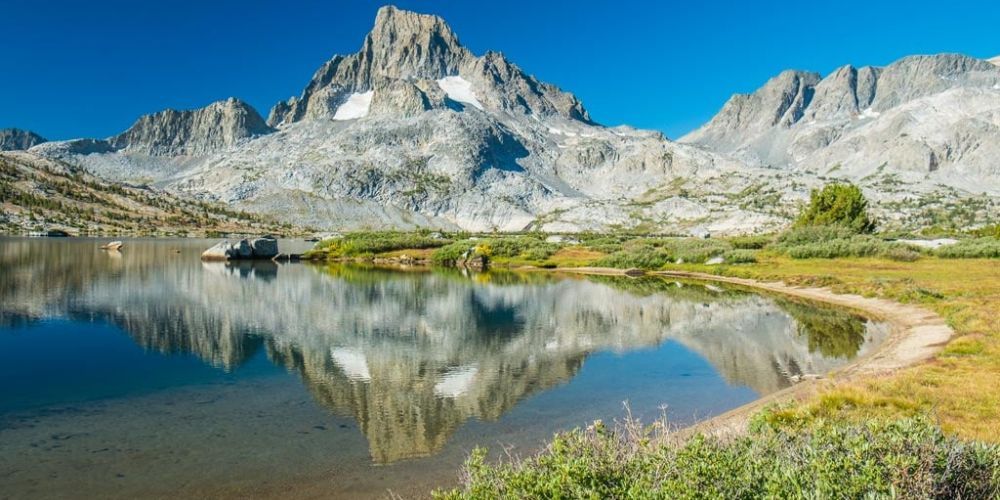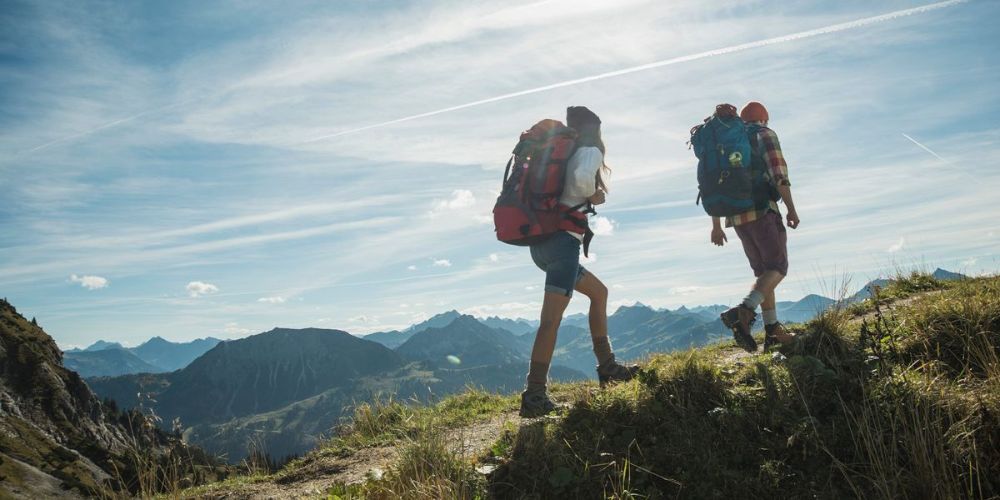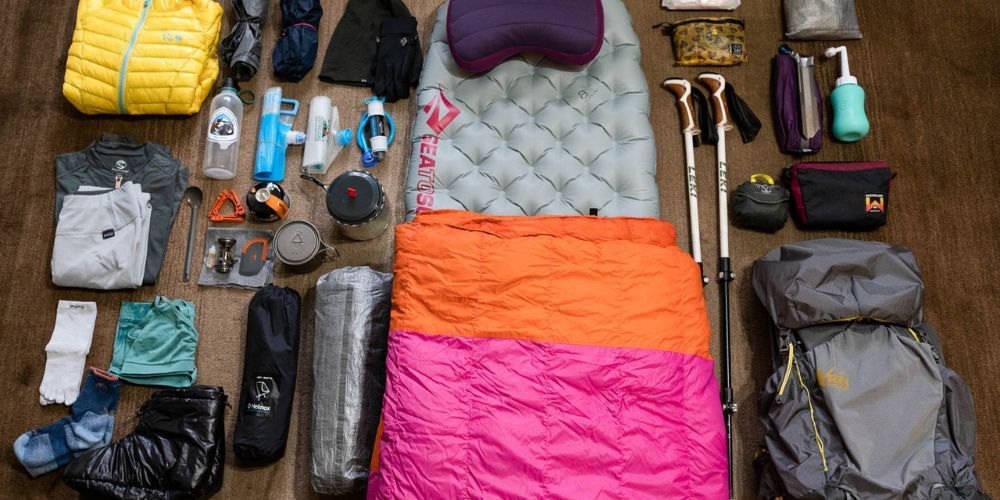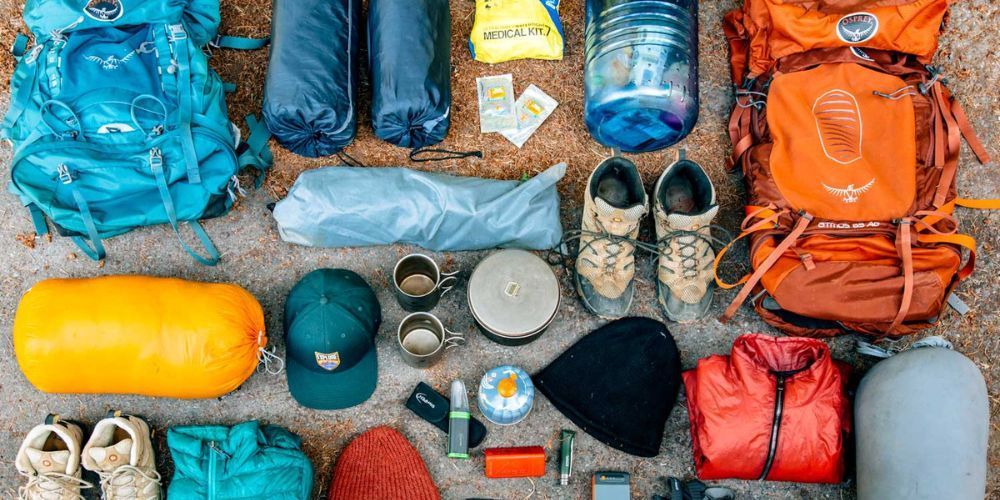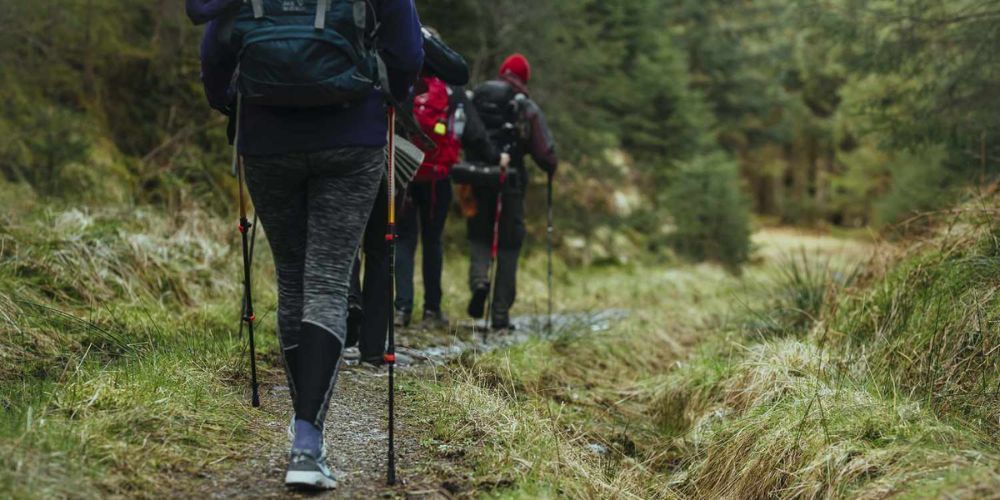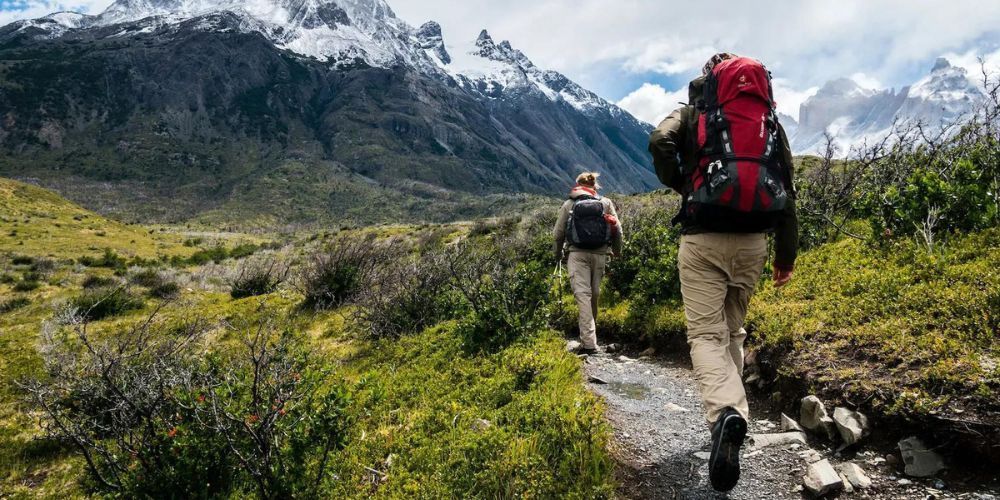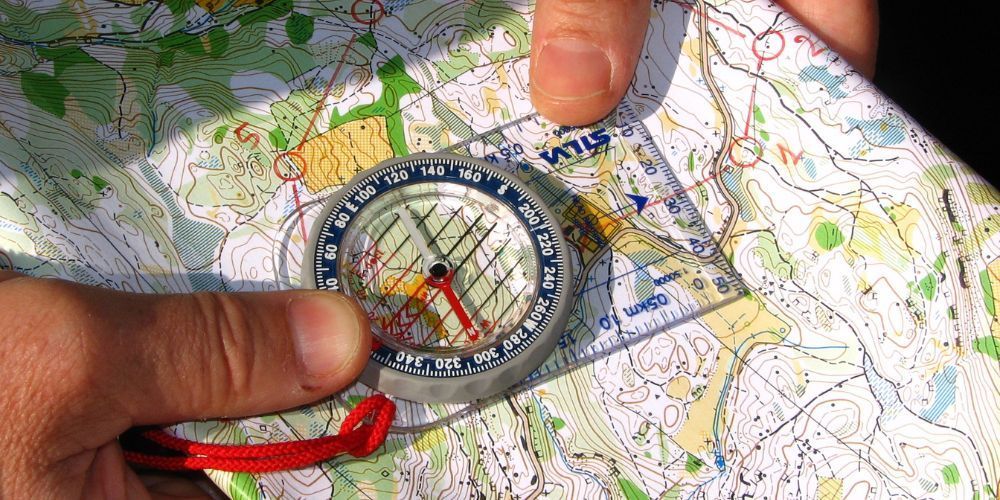Lightweight Backpacking Tents: Top 10 Options for Outdoor Adventures
Exploring the backcountry demands not only stamina but also reliable gear—especially a trustworthy tent that won't weigh you down. With countless options crowding the market, finding the ideal lightweight backpacking tent might seem overwhelming. Waking up under frosty skies or setting up camp under an unpredictable downpour becomes more manageable when you trust your shelter completely.
Here at SportsAndNatureGear.com, we've invested significant time ensuring you have access to thoroughly researched information on the top-ten lightweight tents for 2024. We've considered crucial factors such as weight efficiency balanced against durability and ease of setup—a solution for those early starts and sudden showers on your weekend treks. Let's dive straight into why these models stand out among outdoor enthusiasts this year.
When selecting a backpacking tent, it's essential to consider the number of people using it, the tent's weight for ease of carrying, its seasonality to match camping conditions, and the desired level of comfort. Additionally, evaluating the tent's materials, design features such as freestanding poles and ventilation options, and specialized features like built-in footprints can help in making an informed decision.
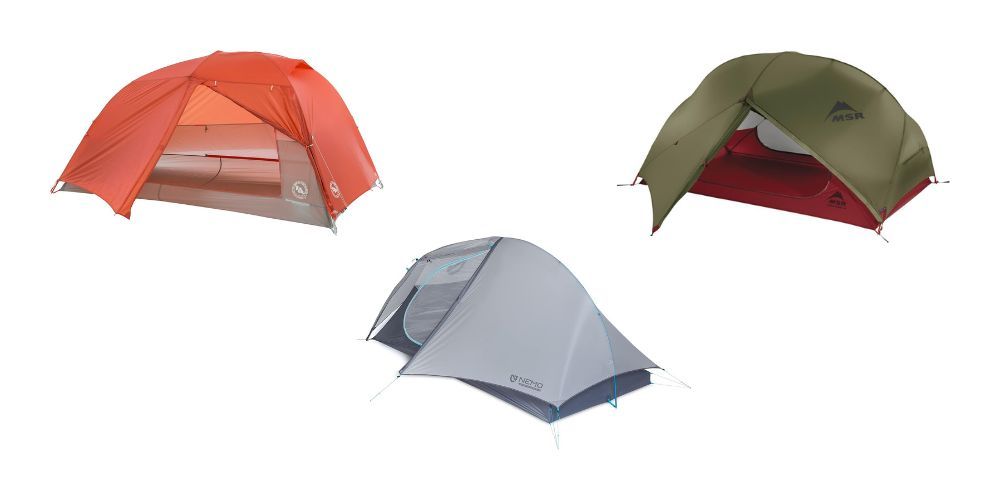
Best Backpacking Tents Available
When you're in the great outdoors, your tent becomes your home away from home. Therefore, it's important to choose one that keeps you safe and comfortable without adding unnecessary weight to your backpack. Let's explore some of the top options for lightweight backpacking tents that offer both reliability and convenience during your outdoor adventures.
The Big Agnes Copper Spur HV UL2 sets a high standard with its exceptional blend of lightweight materials and spacious design. Weighing in at just around 3 pounds, this tent prioritizes livability without adding unnecessary bulk to your pack. Its generous headroom and dual vestibules provide ample space for you and your gear, making it a popular choice among serious backpackers who value comfort.
On the other hand, the MSR Hubba Hubba NX boasts a reputation for durability and a compact setup, making it a reliable option for those seeking a balance between resilience and portability. At about 3 pounds, it's designed to withstand various weather conditions while offering ample interior space for two occupants. This makes it an attractive choice for adventurers who prioritize long-term usage and functional design.
Other notable models in this category include the Tarptent StratoSpire Ultra, known for its tall-occupant-friendly design and generous vestibules. Similarly, the ZPacks Duplex Flex Upgrade shines with its excellent weather protection and large livable space.
Key Considerations
When evaluating lightweight backpacking tents, it's crucial to consider several factors such as:
- Weight-to-space ratio
- Weather resistance
- Ease of setup
- Durability
These tents strike a balance between weight, durability, and livability, catering to the evolving needs of outdoor enthusiasts who seek uncompromising performance without sacrificing comfort on their backpacking journeys.
Moving forward from exploring the best backpacking tents , let's now turn our attention to the key features that you should consider when selecting the perfect lightweight backpacking tent for your outdoor excursions.
Key Features to Consider
When choosing a backpacking tent , it's more than just picking a shelter; it's about finding the right balance between weight, comfort, and functionality to match your specific needs on the trail. Here are some essential features to consider:
Weight and Packability
When you're carrying everything on your back, every ounce counts. The weight of your tent impacts your overall pack weight, so it's crucial to look for a tent that weighs under 3 pounds when packed. Additionally, packability matters; ensuring the tent compresses into a small, manageable size that fits easily in your backpack will make a big difference during long hikes.
Consider a tent with lightweight materials such as high-tech polyester or nylon, which can still offer durability without adding significant weight. Remember, carrying a heavy tent can become burdensome on an extended trek, so prioritize weight and packability when making your choice.
Ease of Setup
After a tiring day of hiking, the last thing you want is an overly complicated tent setup. Look for models with quick and easy setup features. Freestanding tents with color-coded poles streamline the process greatly and save you valuable time and effort at the end of a long hiking day.
Imagine reaching your campsite in the evening after a full day of trekking. Setting up camp quickly allows you to relax sooner, catch the sunset, or enjoy some well-deserved downtime before cooking dinner. That small convenience goes a long way in making your backpacking experience more enjoyable.
Ventilation and Condensation
No one likes waking up to a wet and clammy sleeping bag due to condensation inside the tent. Therefore, good ventilation is crucial to keep you dry and comfortable throughout the night. Look for tents with mesh panels, multiple vents, and double-wall construction to improve airflow inside the tent.
Just like how proper attic ventilation keeps your home comfortable, breathable tents prevent moisture buildup and condensation. An efficiently ventilated tent keeps the interior cooler in warm weather and eliminates moisture buildup during colder nights.
Ventilation makes a noticeable difference in your camping experience.
These key features are vital considerations when selecting a backpacking tent that will enhance your outdoor adventure experience. Each element plays a crucial role in providing comfort, convenience, and reliability during your trips.
As we continue our journey through the world of lightweight backpacking tents , let's now explore the top 10 options available for outdoor adventurers like yourself.
Top 10 Lightweight Tents
Choosing the ideal backpacking tent is crucial. It's the sanctuary after a long day of hiking or trail running. The perfect lightweight option will provide comfort, durability, and protection from the elements without adding unnecessary weight to your pack. Let's look at some of the top contenders in the lightweight tent category.
Let's start with the first contender.
1. Big Agnes Copper Spur HV UL2
This tent is popular for its fantastic balance between weight and space. Campers adore this tent for its impressive interior roominess, packability, good amount of headroom, dual doors and vestibules, and thoughtful design features. It's a pack-friendly option that doesn't compromise on comfort.
The MSR Hubba Hubba NX is hailed for its impressive durability and weather resistance. This 2-person tent is an excellent choice if you want a reliable, sturdy shelter that can withstand various terrain and weather conditions. Its livability and easy setup further add to its appeal.
The NEMO Hornet Elite 2P is known for its ultralight carry weight and efficient design. It includes two doors and vestibules, setting it apart as a roomier ultralight option. If you prioritize weight but also value usability and comfort, this might be the tent for you.
Renowned for its robust construction and all-weather use, the Hilleberg Anjan 2 is designed to provide exceptional stability in windy conditions. It is also built to withstand heavy snow loads in colder climates, making it an ideal choice for more extreme outdoor adventures.
The Zpacks Duplex is exceptionally light and offers spacious interiors. Made with Dyneema fabric, it's among the lightest options available without sacrificing livability or comfort. Its minimalist design makes it perfect for those looking to reduce pack weight without compromising living space.
Each tent on this list has standout features that cater to specific needs and preferences, creating a diverse range of options suitable for different outdoor enthusiasts.
Let's continue exploring the remaining tents on this list to gain valuable insights into their unique advantages that could align with your backpacking needs and personal preferences.
Durability and Materials
When it comes to selecting a lightweight backpacking tent , the durability of the materials used and the quality of its components are vital considerations. The fabric utilized in the construction of the tent determines its longevity, weather resistance, and overall performance. As you go beyond just the weight and packed size, focusing on the types of fabrics and coatings is crucial to evaluate a tent's suitability for outdoor adventures.
Fabrics and Coatings: The denier rating of the fabric provides insight into its durability and thickness. Generally, higher denier ratings indicate tougher materials. For backpacking tents, consider materials like ripstop nylon or polyester with silicone or polyurethane coatings for waterproofing. These coatings play a significant role in safeguarding you against unexpected weather conditions, offering protection from rain and moisture infiltration.
These fabrics and coatings work together as a protective shield against the elements, ensuring that you have a dry and comfortable shelter even in adverse weather. Imagine these materials acting as your dependable armor, shielding you from nature's unpredictability during your outdoor expeditions.
Quality of Components: Now let's shift our focus to the components of the tent such as zippers, poles, and stakes. Ensuring that these components are of high quality is imperative for the tent's overall functionality and resilience in the wilderness. Look for reputable brands like YKK for zippers and DAC for poles. Reliable zippers guarantee smooth operation over time, while sturdy poles offer structural support during inclement conditions.
These components are like the unsung heroes of your shelter—quietly and consistently supporting you throughout your adventures. They are what make setting up camp a breeze and ensure that your refuge stands strong in the face of wind and rain.
Imagine being in the midst of a breathtaking outdoor landscape, facing unpredictable weather changes. As you set up your backpacking tent for the night, it's these robust components that will grant you peace of mind, allowing you to relax and appreciate nature without worrying about tent failure or discomfort.
In essence, assessing the fabrics' denier ratings and coatings along with examining the quality of tent components ensures that your backpacking tent is equipped to withstand various outdoor conditions while providing reliable shelter throughout your adventures. By carefully considering these factors, you can select a tent that not only minimizes weight but also maximizes durability and comfort, enhancing your overall outdoor experience.
With a sturdy understanding now in place on how to evaluate lightweight backpacking tents based on their durability and materials, let's shift our focus to another critical aspect—their size, weight, and portability.
Size, Weight, and Portability
Size, weight, and portability are critical considerations when choosing a lightweight backpacking tent. The perfect size should comfortably accommodate the number of occupants while still minimizing weight. For solo backpackers, 1P tents like the Zpacks Plexamid provide an excellent option at just around 1 pound. Conversely, the MSR Hubba Hubba NX offers a spacious interior for two people with a trail weight under 4 pounds. This variability caters to diverse needs based on group size.
When it comes to backpacking, every ounce matters as you'll be carrying everything on your back. Finding the right balance of space and weight is crucial. A tent that's too heavy will be a burden throughout your adventure, but one that's too small might make you feel cramped and uncomfortable. So, finding that sweet spot between weight and space is really important.
Making Room in Your Backpack
As you consider size and weight, don't forget about packability. The packed dimensions should allow easy storage in or on your backpack , typically around 18-20 inches in length when in the carrying case. This ensures that your tent won't take up too much valuable packing space or add unnecessary bulk to your load.
Imagine stacking bricks into your backpack compared to stacking feathers - which would you prefer? It's the same principle with a tent - you want it to be as light and compact as possible without sacrificing comfort or protection.
Choosing a lightweight backpacking tent involves balancing these aspects while considering the size of your group and the length of your trek. Whether you're embarking on a solo journey or heading out with friends, having a tent that meets your specific needs will enhance your camping experience.
Finding the ideal lightweight backpacking tent is only part of the equation for a successful outdoor adventure. Next, we'll explore how weather resistance and season ratings play pivotal roles in ensuring camping comfort and safety.
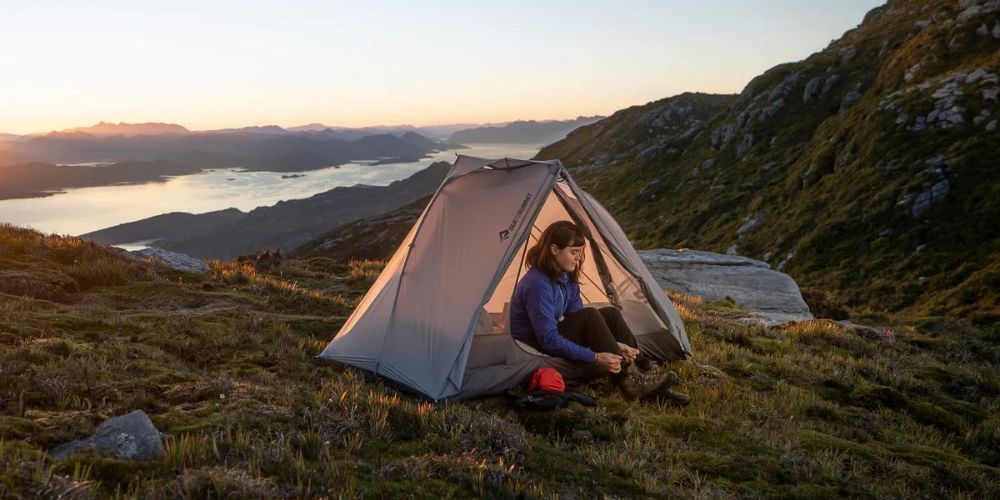
Weather Resistance and Season Ratings
When exploring the great outdoors, it's crucial to consider the potential weather conditions you might encounter during your adventures. Lightweight backpacking tents are designed to offer protection from various elements so you can stay safe and comfortable in nature's embrace.
Season Ratings play a significant role in determining a tent's suitability for different environmental conditions. A 3-season tent is a common choice for backpackers as it provides reliable protection during spring, summer, and fall. These tents are versatile and adept at shielding you from rain and moderate wind. On the other hand, if your outdoor expeditions lead you into more extreme conditions with heavy snowfall and fierce winds, a 4-season tent is the ideal choice. For instance, the Hilleberg Anjan, specifically engineered to withstand harsh winter weather and offers exceptional structural stability.
Rainfly and Footprint accessories contribute significantly to a tent's ability to resist moisture infiltration. A full-coverage rainfly acts as a shield against rain, effectively enhancing the waterproofing of the tent. Meanwhile, a footprint serves as a protective layer between the tent floor and the ground, minimizing moisture seepage from below. It's essential to evaluate whether these accessories are included with the tent or if they need to be purchased separately.
Additionally, a high-quality rainfly not only shields your tent from rain but also helps manage condensation within the tent, ensuring a dry and comfortable interior environment.
When venturing into areas with diverse weather patterns or unpredictable climatic conditions, choosing a tent with robust weather resistance features becomes paramount. The ability of your shelter to withstand unexpected storms or sudden showers can make a significant difference in your outdoor experience.
Ensuring that your backpacking tent is equipped to handle different scenarios gives you peace of mind and confidence to embark on exciting journeys without being hindered by adverse weather conditions.
As we continue our exploration of lightweight backpacking tents , let's uncover more about their waterproof rating, wind resistance capabilities, temperature considerations, and UV resistance—a comprehensive analysis that will empower you to make an informed choice when selecting your ideal shelter for outdoor escapades.
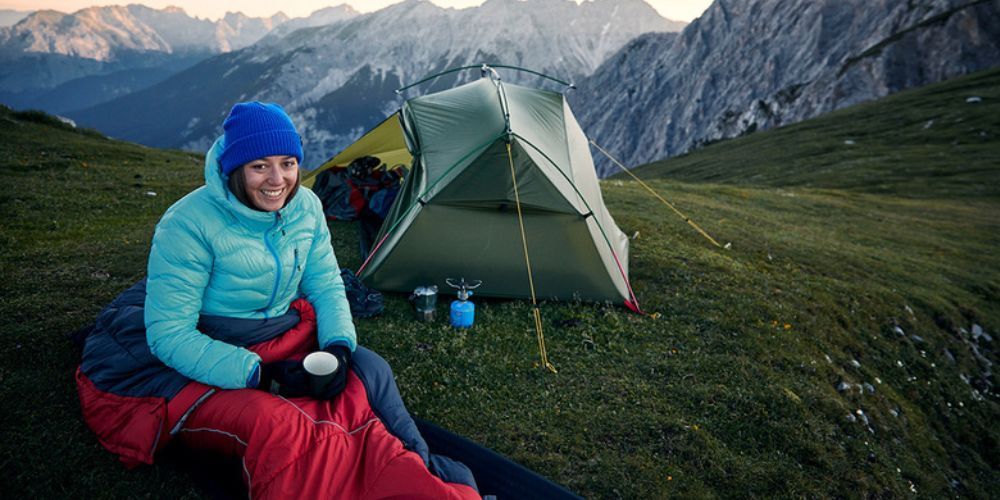
Setup, Ventilation, and Space
Setting up your tent after a long day of hiking should be a straightforward and stress-free task. Ease of use encompasses a tent's design, pole system, and setup instructions. Tents like the REI Co-op Quarter Dome SL 2 prioritize simplicity with clear instructions and user-friendly pole systems that ensure hassle-free setup, even in poor light or adverse conditions.
Additionally, proper ventilation is essential for managing condensation and ensuring comfort inside your tent. Look for models with multiple vents and mesh panels. The Tarptent Double Rainbow, for instance, boasts large mesh walls and roof vents that promote airflow and aid in reducing condensation buildup, providing a comfortable and airy interior environment.
When it comes to livable space, consider the internal dimensions of the tent as well as its capacity to accommodate sleeping pads and provide room for gear storage. The Big Agnes Copper Spur HV UL2 is renowned for its high volume-to-weight ratio, offering roomier interiors compared to many of its competitors. This increased livable space allows backpackers to move around comfortably while also stowing their gear conveniently within the tent.
In addition, some tents are designed with color-coded clips or poles that make assembling them even easier. It's like putting together a jigsaw puzzle where all the pieces fit perfectly and are easily identifiable—this can be lifesaving when weather conditions are less than ideal.
Imagine returning to your campsite after an exhausting day on the trail under low light conditions. A tent with a simple pole system and clear instructions becomes incredibly valuable under these circumstances. It allows you to rest sooner rather than wrestling with a complicated setup process.
It's also vital to have good ventilation in place when you're trying to get some shut-eye after an exerting day in the great outdoors. Proper ventilation not only prevents moisture from accumulating inside the tent but also helps maintain a comfortable temperature in various weather conditions.
Ultimately, a lightweight backpacking tent should offer convenience in setting up, reliable ventilation to manage condensation, and sufficient livable space to support comfort during your outdoor adventures. These aspects significantly contribute to the overall usability and enjoyment of your camping or backpacking experience.
The right lightweight backpacking tent can be the difference between a restful night's sleep or a stressful camping experience. Pay attention to setup ease, ventilation, and livable space to ensure you find the perfect fit for your outdoor adventures.
Nature's Playbook
As an Amazon Associate I earn from qualifying purchases.


